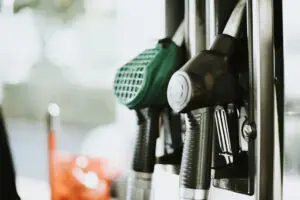Fuel production disruptions, transportation attacks, and Western sanctions are driving price hikes
Disturbances in trade routes and refinery closures have contributed to the rise in global fuel prices. Increases in gasoline and diesel surpass those of crude oil in some major markets. Fuel production disruptions, transportation attacks, and Western sanctions are driving price hikes.
Despite expected new refining capacity coming online, delays are common, making fuel availability uncertain in a year of record demand and U.S. elections. Experts warn gasoline prices could reach multi-year highs.

Although pump prices are rising slowly, low fuel reserves will keep refining margins high, according to the Energy Information Administration, prompting the agency to raise gasoline price forecasts for the second quarter. According to TransportTopics, Goldman Sachs Group notes distillate cracks benefit from low inventories and lower production, while Valero Energy Corp. expects a tight supply-demand balance due to long start-up periods for new refining capacities.
What about global production?
Following numerous delays, the Dangote refinery in Nigeria has initiated the export of fuel; however, doubts remain regarding its complete capacity and the schedule for the activation of specific units. Similar uncertainties surround Mexico’s Dos Bocas facility operated by Pemex.
Crude and raw material supply interruptions raise questions about fuel production. Russian sanctions and global trade flow changes due to Houthi attacks affect production. Concerns about gasoline component availability, especially ahead of the U.S. summer driving season, are compounded by Russian sanctions impacting alkylation and reformate production, according to Jorge Molinero of Sparta Commodities.
Global refining capacity is expected to increase this year, with varying outlooks depending on the fuel. Product margins are forecasted to be lower than in 2023 but higher than historical levels due to delays in new plants and inefficiencies caused by Russian sanctions.

Gas prices at lowest during the holiday season
Data by the American Automobile Association shows that December has been the cheapest month of the year for gas prices. The magic of Christmas has

Accident rates rise nearly 30% in winter holiday travel
The month of December becomes one of the most congested of the year, making the risk of an accident more volatile. Winter is the most

Working on Christmas: The Essential Jobs That Never Stop
At Christmas, while millions of families gather to celebrate, essential professions remain active around the clock so everyday life can keep moving. Truck drivers, doctors, firefighters, police officers and basic service workers keep the country running even on December 25

Has ELP enforcement really reduced trucking capacity?
A study by Overdrive questions the real impact of ELP Enforcement on U.S. freight rates. An investigation conducted by Overdrive, based on data from its

Inside the $33 Million Federal Plan to Modernize U.S. Transportation
The U.S. Department of Transportation has announced a federal investment program focused on innovation, road safety, and artificial intelligence applied to transportation, implemented through the University Transportation Centers.

The best Christmas gifts for a trucker
Find the best Christmas gifts for truck drivers with these options based on their needs and personality. The holiday season is often a challenging time
